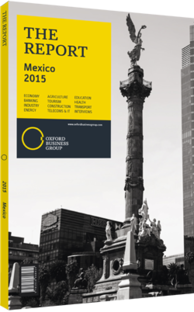Emilio Lozoya Austin, CEO, Petroleos Mexicanos (Pemex): Interview

Interview: Emilio Lozoya Austin
How will the planned company reforms change Pemex’s corporate structure?
EMILIO LOZOYA AUSTIN: The reforms establish the very clear goal of transforming Pemex within two years into a productive state enterprise. To do this, Pemex will reform its strategy, structure, business processes and corporate culture, something it has not done since 1992. The most important changes recently approved by the administrative council include transforming the four subsidiaries into two productive enterprises, one upstream and one downstream. These two lines will share services and their restructuring will allow Pemex to save $10bn. Pemex Exploration and Production will become the subsidiary responsible for upstream activities, while Pemex Refining, Pemex Gas and Basic Petrochemical, and Pemex Petrochemicals will merge to become the subsidiary enterprise dealing with downstream activities.
Apart from this, we have decided to centralise the procurement, human resources, legal, financial and strategic planning activities, among others. This will help avoid redundancy in administrative tasks. For example, we are now homogenising our buying procedures, which would have allowed us to save approximately 5-10% on the $40bn worth of purchases made in 2014.
Are there plans to employ enhanced oil recovery (EOR) techniques on mature fields?
AUSTIN: With the output decline in our major fields such as Cantarell, we have focused on diversifying production strategies. We have balanced out production by increasing the output of fields such as Ku-MaloobZaap, Ixtal and Crudo Ligero Marino. In addition, we have revitalised mature fields such as Ébano, Delta del Grijalva and Cinco Presidentes by adopting integrated exploration and production contracts, which will shortly migrate into joint ventures.
The use of technology and EOR techniques is also crucial in increasing the recovery factor of mature fields. In many cases, Pemex does not have the necessary EOR technology. However, the reforms will allow us to build partnerships with private companies that have the most modern and efficient EOR methods.
How do you view the petrochemicals sector’s future?
AUSTIN: Pemex Petrochemicals is the only one of our subsidiaries that has worked in an open market, which it has done since 2008. As a result of the energy bill, the sector will gradually open further and will overcome some of its current issues regarding over-regulation.
To boost capacity, Pemex Petrochemicals will modernise two of its subsidiaries. The fertiliser company will integrate the value chain, from producing ammonia through to selling fertilisers, and will comply with the social mandate of strengthening Mexico’s agriculture capacity. As for the ethylene subsidiary, it will separate its business lines to integrate the value chain from ethane production through to selling polymers.
Pemex wants to reduce imports of petrochemicals products, since almost 65% of national demand is imported. We have thus taken steps to create strategic alliances to boost production and add more profitability to the value chain through the offer of diverse products such as urea, sodium cyanide, ethylene oxide and low-density polyethylene. With the passing of the energy bill, the new scenario in the petrochemicals industry will benefit not only Pemex but Mexican rural farmers too, since they will have access to nitrogen-based fertilisers at lower prices.
What is the role of unconventional hydrocarbons resources in Mexico’s energy security?
AUSTIN: Considering that we have the sixth-largest shale gas reserves in the world, unconventional resources will play a major role in contributing to Mexico’s energy security. In proven reserves, with current consumption rates, we have enough gas to last 10 years. If we take into account proven, probable and possible reserves, we have enough gas for 30 years. The country has prospective non-conventional resources for almost 100bn barrels of crude oil equivalent.
You have reached the limit of premium articles you can view for free.
Choose from the options below to purchase print or digital editions of our Reports. You can also purchase a website subscription giving you unlimited access to all of our Reports online for 12 months.
If you have already purchased this Report or have a website subscription, please login to continue.

